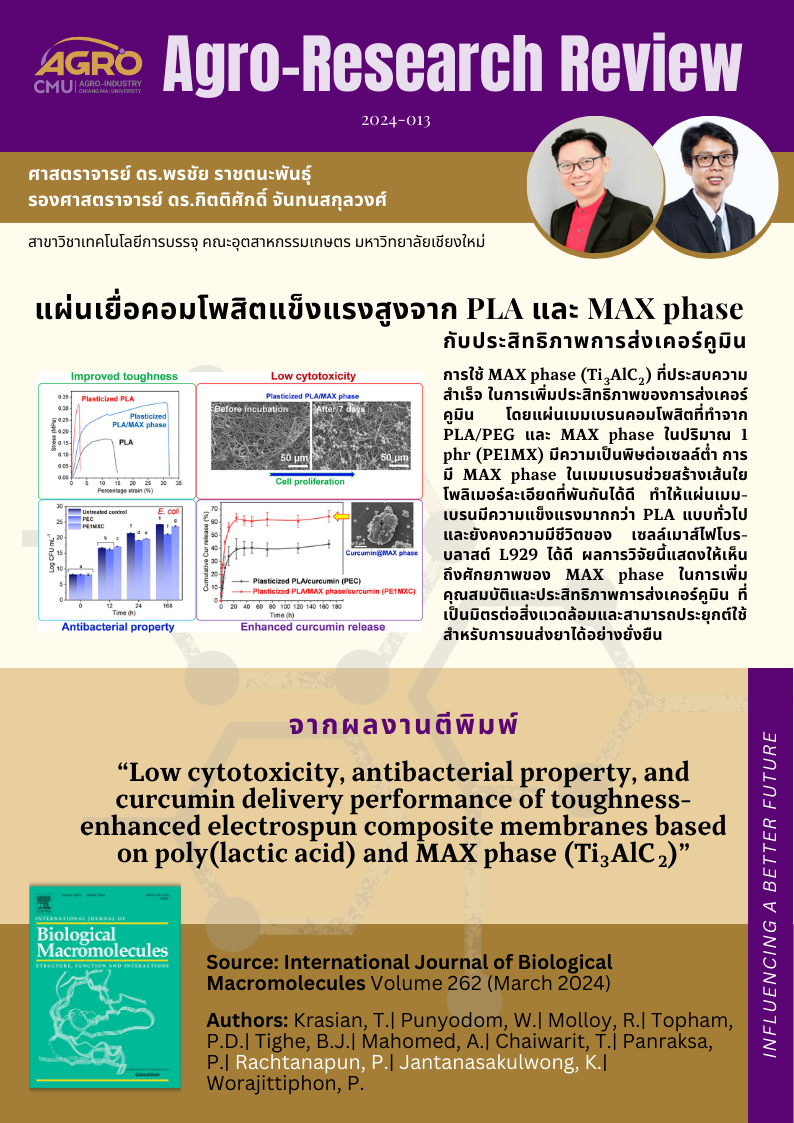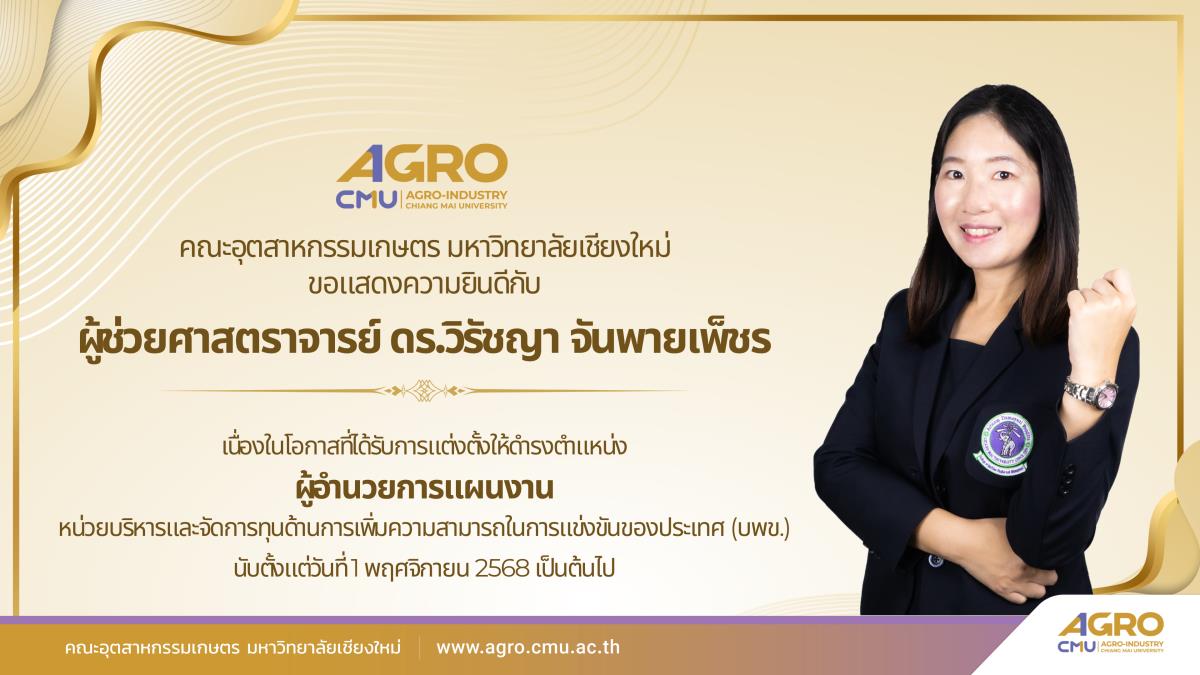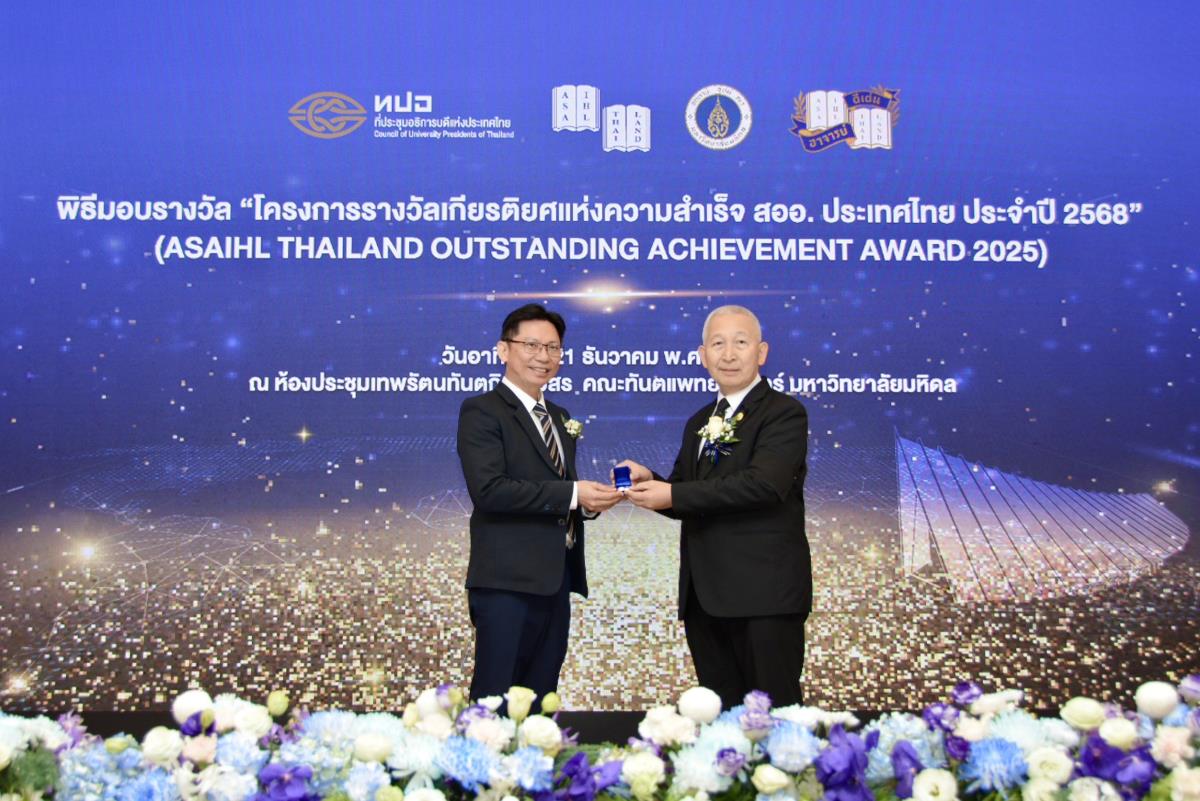
แนะนำงานวิจัย 2024-013 แผ่นเยื่อคอมโพสิตแข็งแรงสูงจาก PLA และ MAX phase กับประสิทธิภาพการส่งเคอร์คูมิน
การใช้ MAX phase (Ti3AlC2) ที่ประสบความสำเร็จในการเพิ่มประสิทธิภาพการส่งเคอร์คูมิน โดยแผ่นเมมเบรนคอมโพสิตที่ทำจาก PLA/PEG และ MAX phase ในปริมาณ 1 phr (PE1MX) มีความเป็นพิษต่อเซลล์ต่ำ การมี MAX phase ในเมมเบรนช่วยสร้างเส้นใยโพลิเมอร์ละเอียดที่พันกันได้ดี ทำให้แผ่นเมมเบรนมีความแข็งแรงมากกว่า PLA แบบทั่วไป และยังคงความมีชีวิตของเซลล์เมาส์ไฟโบรบลาสต์ L929 ได้ดี ผลการวิจัยนี้แสดงให้เห็นถึงศักยภาพของ MAX phase ในการเพิ่มคุณสมบัติและประสิทธิภาพการส่งเคอร์คูมิน ที่เป็นมิตรต่อสิ่งแวดล้อมและสามารถประยุกต์ใช้สำหรับการขนส่งยาได้อย่างยั่งยืน
The successful use of MAX phase (Ti3AlC2) in enhancing curcumin delivery efficiency is demonstrated through composite membranes made from PLA/PEG and 1 phr MAX phase (PE1MX), showing low cytotoxicity. The presence of MAX phase in the membrane helps create fine, entangled polymer fibers, resulting in greater toughness compared to regular PLA membranes and supporting the viability of mouse fibroblast L929 cells. This research highlights the potential of MAX phase to improve properties and curcumin delivery efficiency in an eco-friendly way, suitable for sustainable drug delivery applications.
Topic: Low cytotoxicity, antibacterial property, and curcumin delivery performance of toughness-enhanced electrospun composite membranes based on poly(lactic acid) and MAX phase (Ti3AlC2)
Authors: Krasian, T.| Punyodom, W.| Molloy, R.| Topham, P.D.| Tighe, B.J.| Mahomed, A.| Chaiwarit, T.| Panraksa, P.| Rachtanapun, P.| Jantanasakulwong, K.| Worajittiphon, P.
Abstract:
MXenes, synthesized from their precursor MAX phases, have been extensively researched as additives to enhance the drug delivery performance of polymer matrices, whereas there is a limited number of previous reports on the use of MAX phases themselves for such applications. The use of MAX phases can exclude the complicated synthesis procedure and lessen resultant production and environmental costs required to convert MAX phases to MXenes. Herein, electrospun membranes of poly(lactic acid) (PLA) and a MAX phase (Ti3AlC2) have been fabricated for curcumin delivery. The composite membrane exhibits significantly higher toughness (8.82 MJ m−3) than the plasticized PLA membrane (0.63 MJ m−3) with low cytotoxicity, supporting proliferation of mouse fibroblast L929 cells. The curcumin-loaded composite membrane exhibits high water vapor transmission (∼7350 g m−2 day−1), porosity (∼85 %), water wettability, and antibacterial properties against E. coli and S. aureus. Seven-day curcumin release is enhanced from 45 % (PLA) to 67 % (composite) due to curcumin diffusion from the polymer fibers and MAX phase surface that contributes to overall increased curcumin adsorption and release sites. This work demonstrates the potential of the MAX phase to enhance both properties and curcumin delivery, promising for other eco-friendly systems for sustainable drug delivery applications.
Keywords: Curcumin; Drug delivery; Electrospun membrane; Low cytotoxicity; MAX phase; Poly(lactic acid)
View at publisher:
#อกมช. #agrocmu #CMU






